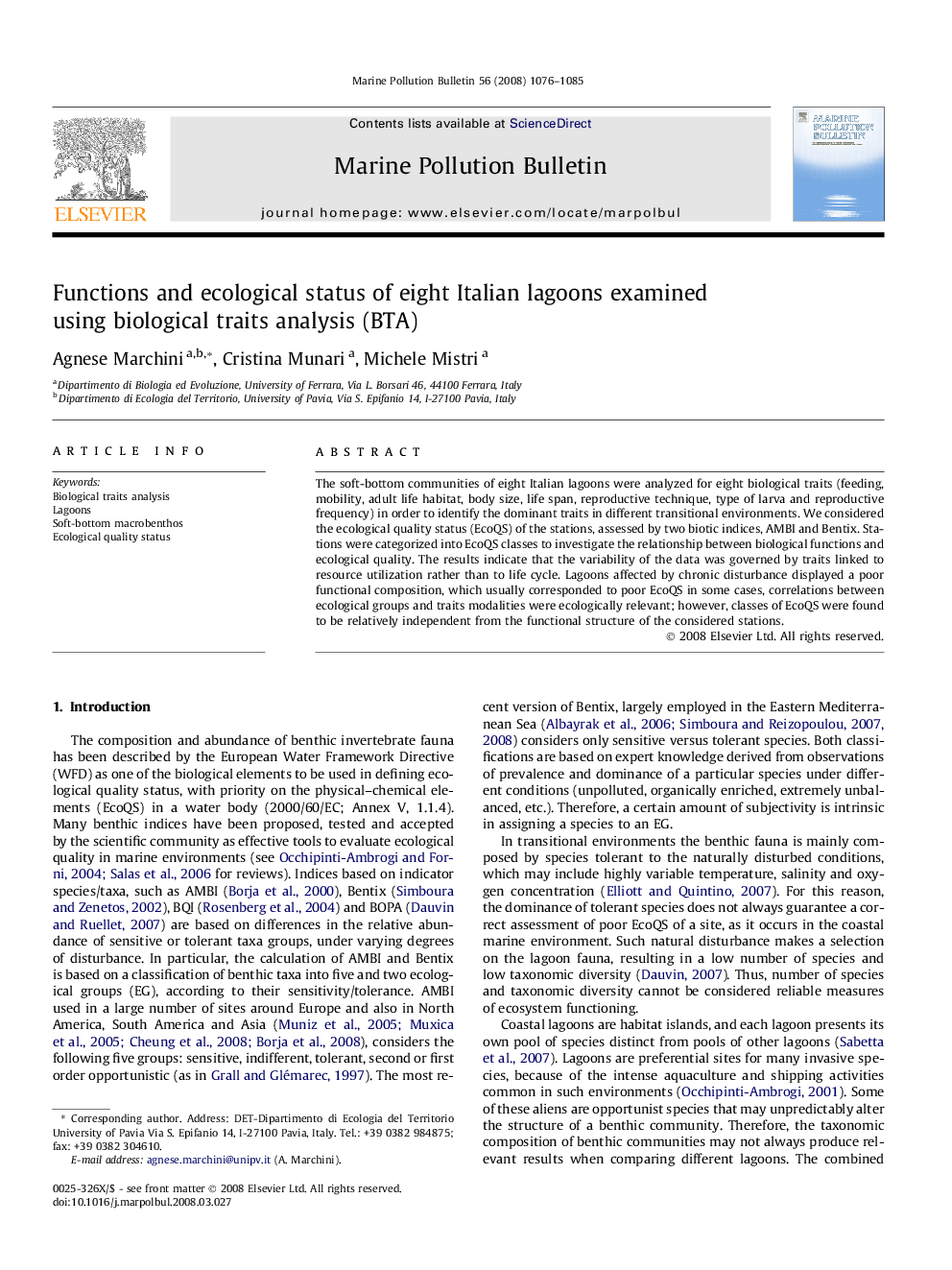| Article ID | Journal | Published Year | Pages | File Type |
|---|---|---|---|---|
| 4477612 | Marine Pollution Bulletin | 2008 | 10 Pages |
The soft-bottom communities of eight Italian lagoons were analyzed for eight biological traits (feeding, mobility, adult life habitat, body size, life span, reproductive technique, type of larva and reproductive frequency) in order to identify the dominant traits in different transitional environments. We considered the ecological quality status (EcoQS) of the stations, assessed by two biotic indices, AMBI and Bentix. Stations were categorized into EcoQS classes to investigate the relationship between biological functions and ecological quality. The results indicate that the variability of the data was governed by traits linked to resource utilization rather than to life cycle. Lagoons affected by chronic disturbance displayed a poor functional composition, which usually corresponded to poor EcoQS in some cases, correlations between ecological groups and traits modalities were ecologically relevant; however, classes of EcoQS were found to be relatively independent from the functional structure of the considered stations.
